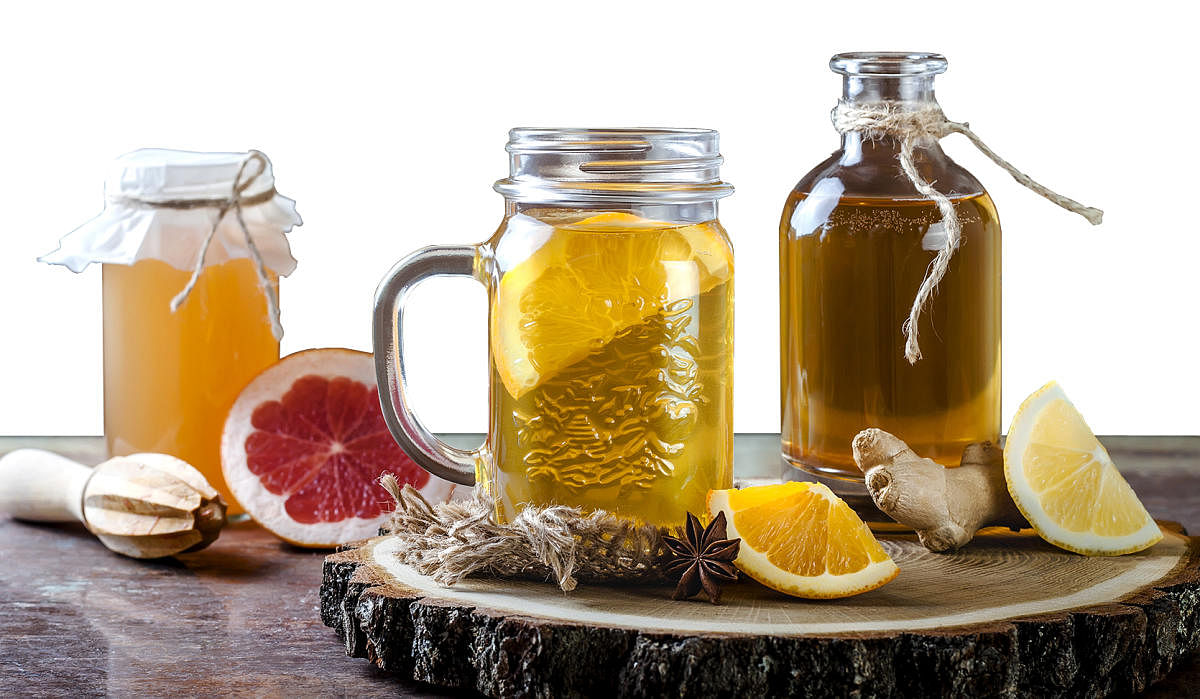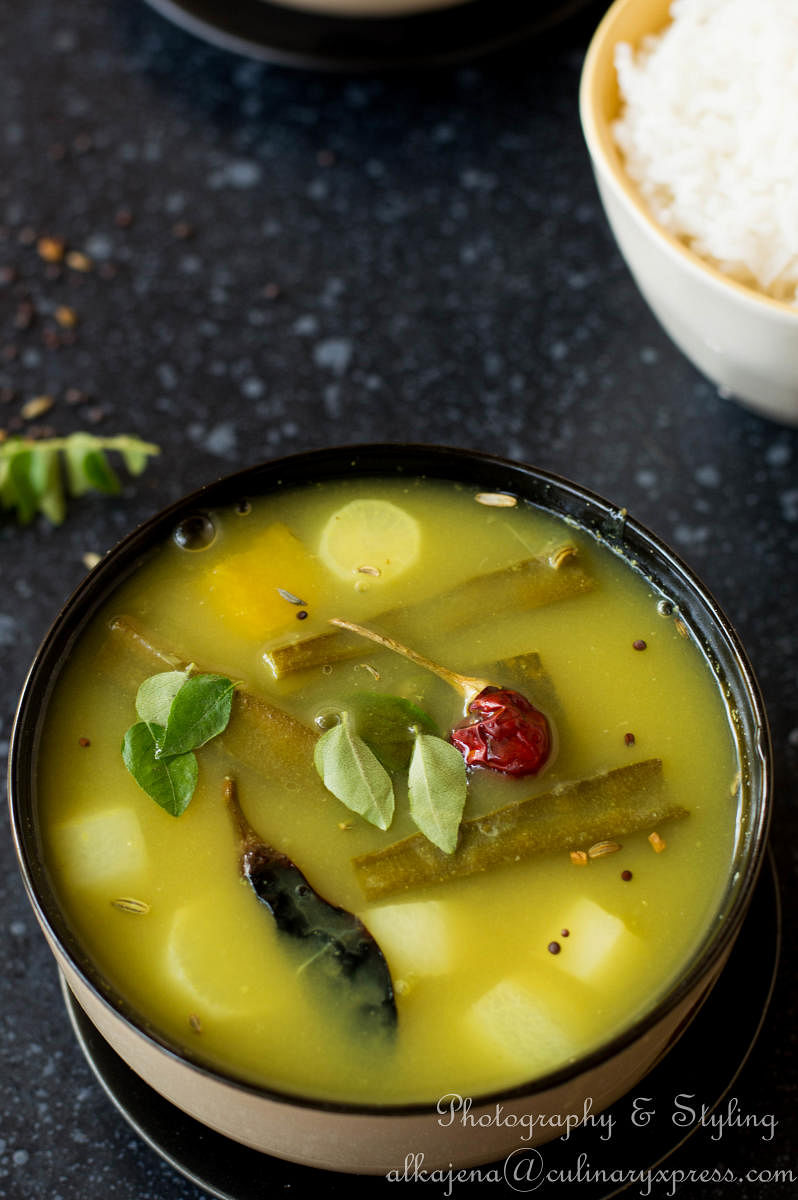

A few years ago, when culinary explorer Chef Vikas Seth introduced the Kali Gajar Kanji, a more vibrant kin of the Russian fermented bread drink as part of his winter menu, it was seen as a novelty. After all, the Mexican specialist was among the few influential advocates of local cuisine, especially that of erstwhile Punjab, a state he is native to. Then came the pandemic, and now the drink that was recreated as part of Garam Masala’s nostalgic menu transformed into a much-in-demand health drink that was ordered often not only for its funky puckering taste but also for its gut-friendly goodness.
A winter staple in Delhi NCR and regions close by, Kali Gajar Kanji has been a popular antidote that gears one for the bone-chilling winter and against the vagaries. Fascinatingly, the kanji, which in Eastern India is made from fermented rice water and rice along with vegetables, wasn’t the only drink that was making its comeback or dining debut around the time. Thanks to glocal cuisine advocates like Chef Sabyasachi Gorai, mixologist Yangdup Lama and Aman Dua, and the likes of MAVI, Hill Zill Wines, Moonshine Meadery, Cazulo Feni and culinary enthusiasts, there was this full array of traditional fermented drinks charting their second coming — not only as this new cool kid on the block with a funky but likeable taste, some instantly even, but also as a tipple that slashed the guilt by packing in a mean punch with its gut-friendly goodness. One such debutant was the Handia, which came to the dining fore as this cocktail drink at the now-closed Lavaash By Saby.
Made with fermented rice water or Torani, which according to a recent study conducted by AIIMS’ Centre of Excellence for Clinical Microbiome Research (CCMR) has short-chain fatty acids that are known to improve gut health and boost immunity, the chef’s interpretation of this traditional Odia hooch earned him enough brownie points for its jazzy taste. Likewise was the case with Dua’s seven-element drink menu that brought to the fore many of the traditional fermented drinks — both seriously alcoholic and otherwise — that were once a part of the diet habits, especially apple cider in Himachal Pradesh, and those made with millets, like the versatile foxtail millet popular mostly among the tribes. Each of the drinks that were tweaked for modern-day sensibilities came with their added perks of funky taste as well as a good dose of gut flora boosters.
Yet, when it came to popularity, most traditional alcoholic beverages like the Masara, Xaj and Thallaka didn’t quite make the dent as they may have done in the past to get into our eating habits and books, but the sheer short-term euphoria wave proved to do enough to turn the tide towards traditional techniques that once produced drinks that could wed pleasure and health. The result, while the beverage aisle filled with wines not just of grapes but different fruits and a mix of fruits and flowers that went by the name of Avadatika in ancient times and the rising popularity of fermented tea tipple, kombucha, it also created a fan base for other sub spirits like arrack and tadi among others. Spearheaded by niche and small startups, these redesigned drinks began their journey as artisanal products that were marketed as a work in progress.
Incidentally, they were taken as one too and thus stood a fair chance at evolving into a product that had the right palate appeal and pleasure-wellness cuvee. High amongst these fermented drinks to gain traction was kombucha which entered India in the mid to late 2000 with a western endorsement and a power pack story of being the popular royal Chinese antidote that could cure quite a few ailments, especially those arising from the stomach — a region that both in Chinese traditional medicine and Ayurveda is considered to be the epicentre of wellness. But was the funky taste and the back story enough to garner curiosity and eventual popularity? Let’s say it was a case of the right time and right place. Much of the time when these partly alcoholic fermented drinks took a foothold in the foodscape was dominated by three very unique movements of going local, discovering regional cuisine and exploring umami. This interesting matrix worked like a nurturing cocoon for each of these drams to brew a story. Many like Handia, palm toddy, apple cider and others are still an integral part of our culture. They are made the traditional way and for the same purpose as they were first designed for by the Sunhris and recorded in the Rigveda. This ace made our palates primed to not only adapt to newer formats of fermented drinks but also appreciate their fine nuances.
Such was the popularity of the fermented drink that many took to making their stash that did more than present a guilt-free way to drinking. Which brings us to the most pertinent question: do these drinks walk the talk? Sadly, there isn’t enough research done to prove whether the acute tartness of these drinks sums up to any serious health benefits, however, experts like nutritional therapist Shaveta Bhassin and lifestyle specialist Dr Vishakha Shivdasani go by the goodness of fermentation in each case. Fermentation, which is an ancient technique of preservation and reformatting, is a process whereby complex carbohydrate and starch is first broken into sugar and then into alcohol or acid that is nourishing for the gut.
(The author is a seasoned food columnist and curator of experiential dining experiences, pop-ups and retreats for chefs.)